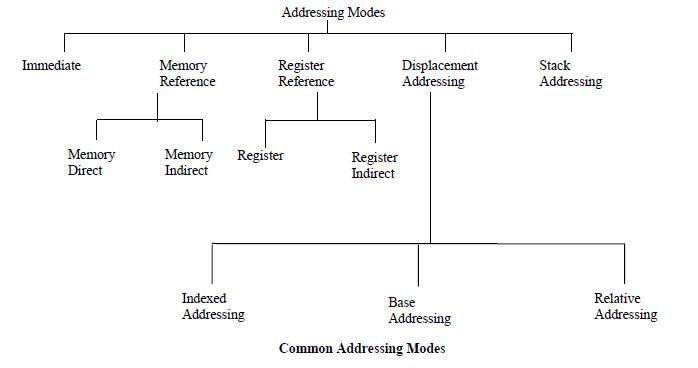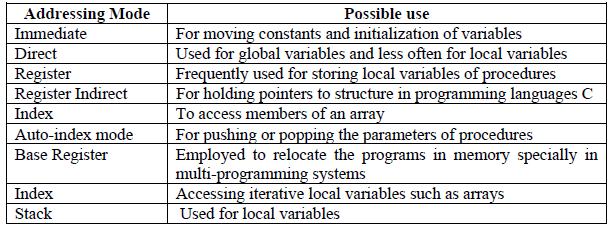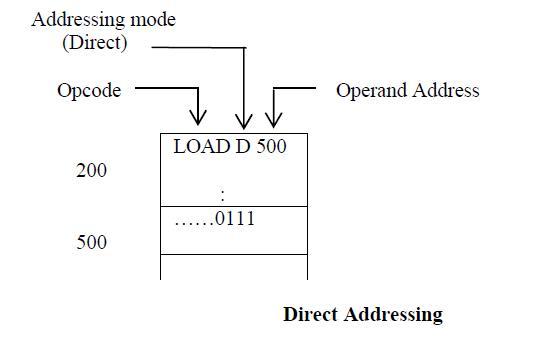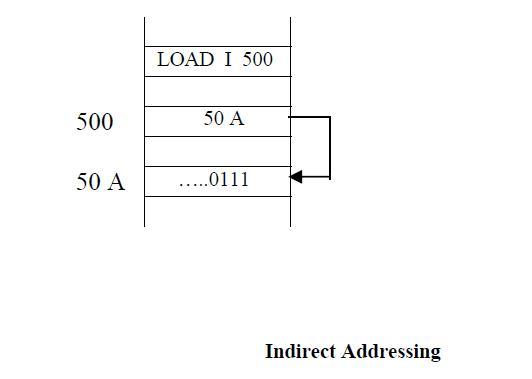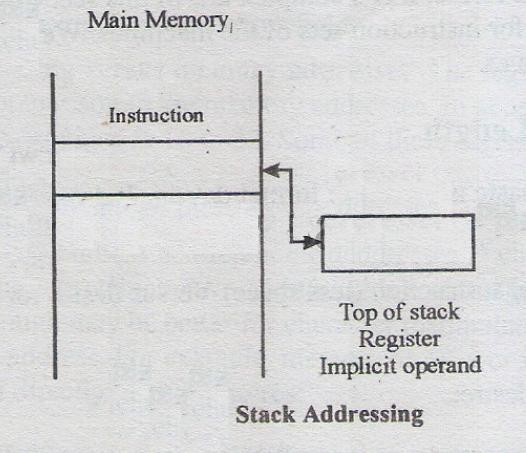Explain any five addressing modes used in an 8086 microprocessor, with the help of an example of each. 5m jun2006
The following tree shows the common addressing modes:
In general not all of the above modes are used for all applications. However, some of the common areas where compilers of high-level languages use them are:
Immediate Addressing
When an operand is interpreted as an immediate value, e.g. LOAD IMMEDIATE 7, it is the actual value 7 that is put in the CPU register. In this mode the operand is the data in operand address field of the instruction. Since there is no address field at all, and hence no additional memory accesses are required for executing this instruction. In other words, in this addressing scheme, the actual operand D is A, the content of the operand field: i.e. D = A. The effective address in this case is not defined.
Direct Addressing
In this scheme the operand field of the instruction specifies the direct address of the intended operand, e.g., if the instruction LOAD 500 uses direct addressing, then it will result in loading the contents of memory cell 500 into the CPU register. In this mode the intended operand is the address of the data in operation. For example, if memory cell 500 contains 7, as in the diagram below, then the value 7 will be loaded to CPU register.
Indirect Addressing
In this scheme the operand field of the instruction specifies the address of the address of intended operand, e.g., if the instruction LOAD I 500 uses indirect addressing scheme, and contains a value 50A, and memory location 50A contains 7, then the value 7 will get loaded in the CPU register.
Register Addressing
When operands are taken from register(s), implicitly or explicitly, it is called register addressing. These operands are called register operands. If operands are from memory locations, they are called memory operands. In this scheme, a register address is specified in the instruction. That register contains the operand. It is conceptually similar to direct addressing scheme except that the register name or number is substituted for memory address.
Register Indirect Addressing
In this addressing scheme, the operand is data in the memory pointed to by a register.
In other words, the operand field specifies a register that contains the address of the operand that is stored in memory. This is almost same as indirect addressing scheme except it is much faster than indirect addressing that requires two memory accesses.
Stack Addressing
In this addressing scheme, the operand is implied as top of stack. It is not explicit, but implied. It uses a CPU Register called Stack Pointer (SP). The SP points to the top of the stack i.e. to the memory location where the last value was pushed. A stack provides a sort-of indirect addressing and indexed addressing. This is not a very common addressing scheme. The operand is found on the top of a stack. In some machines the top two elements of stack and top of stack pointer is kept in the CPU registers, while the rest of the elements may reside in the memory.
What is the sequence of micro-operations required to fetch an instruction? 5m jun2006
Solved Answer can be found on this link http://cssimplified.com/assignments/write-and-explain-the-sequence-of-micro-operations-that-are-required-to-fetch-and-execute-this-instruction-ignou-mca-assignment-2014-15
Assume a computer has 32 words RAM each having a word of 16 bits and a cache memory of 4 blocks, with each block having 16 bits. Where can we find a main memory address 21 in the cache (if it exists) if
(i) Set associative mapping is used?
(ii) Direct mapping is used?
(iii) Associative mapping is used?
Explain your answers with the help of a diagram in each case. 10m jun2006
Similar Solved Answer can be found on this link http://cssimplified.com/assignments/a-computer-has-512-words-ram-with-a-word-size-of-32-bits-and-a-cache-memory-of-8-blocks-with-block-size-of-64-bits-ignou-mca-assignment-2014-15

